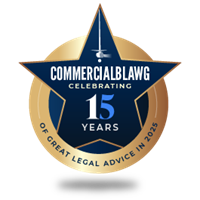Solicitor and Partner Mr. Anis Waiz continues his critical review of case law. Here we look at a very important case arising from alleged mortgage frauds.
Introduction
Whilst this is a criminal case, for the purpose of this blog we will examine the issues surrounding the solicitor’s conduct and the role of solicitors in lending transactions. Somewhat ironically a failure to understand the mechanics of the Land registration Act 2002 and the meaning of “mortgagor” led the prosecution to error.
From the outset this is an unusual case and was an appeal on an issue as to Dishonesty under R v Ghosh [1982] QB 1053 (In determining whether the prosecution has proved that the defendant was acting dishonestly, a jury must first of all decide whether according to the ordinary standards of reasonable and honest people what was done was dishonest. If it was not dishonest by those standards, that is the end of the matter and the prosecution fails)
Background
The appellant a solicitor built up an expertise in property and conveyancing. Apart from his work as a solicitor, he made his own investments in property through contacts in the local property market.
He became aware that a certain lender had changed the way it provided buy-to-let mortgages. The Lender was prepared to relax the six month rule which had prevented an owner from obtaining a mortgage on a buy-to-let basis until the owner had owned the property for more than six months.
The appellant acted in a number of transactions. In some of these x was the purchaser and in others y. Materially the appellant provided a bridging loan to the purchaser who used the loan to pay cash for the property where a cash price would secure the property at less than its market value.
As security for the loan the appellant required a declaration of trust. The declaration provided that the purchaser would hold the property and net proceeds of sale and net income upon trust for sale for the appellant (or for the appellant and the purchaser in equal shares).
The property was independently valued and on the basis of that valuation a mortgage was provided by the Lender at 80% of the value. In eight transactions the loans amounted to between £63,750 and £106,695.
The appellant acted for the purchaser and lender and provided a standard Certificate of Title as per the then Solicitors’ Code of Conduct 2007. Once the monies had been advanced by the Lender the amount of the loan provided by the appellant was repaid.
There was evidence the lender would not have advanced funds to the purchasers under the mortgages, if they had known of the appellant’s personal interest in the transactions.
The Criminal Investigations
The police investigated the affairs of one of the purchasers. They attended the offices of the firm where the appellant was employed and obtained the files relating to the transactions.
The appellant, told the police that x was his client, but did not mention any personal or business connection. The conveyancing files were delivered to a solicitor specialising in the field of solicitors’ regulation and conveyancing. They concluded that the personal interest of the appellant in the transactions breached the conditions of the Council of Mortgage Lenders’ Handbook and that he had acted where he had a personal conflict of interest which was in breach of the then Rule 3 of the Solicitors’ Code of Conduct. It was also noted there had been no disclosure to the lender of any details of the appellant’s interest.
The appellant was arrested and served with a restraint order under the Proceeds of Crime Act 2002. He faced two counts of fraud and transferring criminal property contrary to s.327(1)(d) of the Proceeds of Crime Act 2002. The appeal was only concerned with the count relating to fraud.
The Key issues
1 The prosecution case was that the lender would not have advanced the funds if the false representation as to the Certificate of Title had not been made.
2 The appellant was representing by signing the Certificate that the title of the purchasers was unencumbered. He plainly knew what he was doing was dishonest.
3 As an experienced solicitor, he would have known that the lender would not have allowed him to act in the transaction for the lender and the purchasers as he was lending the latter money and that gave rise to a conflict of interest.
4 He must have known he was in breach of the Council of Mortgage Lenders’ Handbook and the Solicitors’ Code of Conduct. The fact he knew he had acted dishonestly could be inferred from the way in which he had covered up the transactions in the books of the firm.
5 The appellant argued although it was admitted that the transactions were carried out in the way described and though he may have unknowingly been in breach of the Solicitors’ Code of Conduct and the Council of Mortgage Lenders’ Handbook, the appellant had not acted dishonestly.
6 The title was going to be unencumbered once the bridging loan he had advanced had been repaid with the money received from the mortgage provided by the lender. Thus the appellant he had no intention of enforcing the declarations of trust. He had not tried to obscure the dealings by falsifying the accounts, as the book-keeper at the firm must have been aware of what had been done.
The appellant was convicted. The reader is referred to the decision as to the issues of dishonesty in the criminal proceedings. However for the purpose of the Appeal the issues surrounded the proper construction of the certificate of title.
The certificate of title
The Court of Appeal Criminal Division considered the certificate in the light of the Ghosh test for Dishonesty. If there were no false representation it was common ground that there was no case to answer and the convictions on all the counts must be quashed.
The following is germane:
1 The prosecution relied on two paragraphs in the certificate
“(i) … we have investigated the title to the Property, we are not aware of any other financial charges secured on the Property which will affect the Property after completion of the mortgage, and upon completion of the mortgage, both you and the mortgagor … will have a good and marketable title to the Property and to Appurtenant rights free from prior mortgages or charges and from onerous encumbrances which title will be registered with absolute title (“the Encumbrances”)
x) neither the principal nor any other solicitor or registered European lawyer in the firm giving this certificate nor any spouse, child, parent, brother or sister of such a person is interested in the property (whether alone or jointly with any other) as mortgagor (“the Conflict”)
2 The court noted that in interpreting forms of Certificate the court must apply consistent interpretations and not draw fine distinctions. The Certificate was drafted by the Council of Mortgage Lenders; and if they wish to impose liability on conveyancers, they must do so in clear terms: Barclays Bank plc v Weeks Legg & Dean [1999] QB 309; Midland Bank plc v Cox McQueen [1999] PNLR 593.
3 Many of the phrases used in these paragraphs have well recognised technical meanings derived from centuries of conveyancing practice. For example the phrase “good and marketable title” was explained by Millett LJ in Barclays Bank plc v Weeks Legg & Dean [1999] QB 309.
4 The prosecution relied on the existence of the trust deed and its non-disclosure as amounting to a breach of both the Encumbrances and the Conflict in the Certificate . The trust deed was executed by the registered proprietor and declared a trust in favour of the appellant. It was not expressed to be a trust by way of security. It’s existence did not appear on the register of title at HM Land Registry. The appellant was not in actual occupation of any of the properties in question.
5 As to the Encumbrances as any conveyancer will be aware the court considered section 29 of the Land Registration Act 2002 and overriding interests as set out in schedule 3 of the Act. The interests created by the trust deeds were not overriding interests. Thus on the registration of a registrable disposition, for example the mortgages any equitable interests binding the disponer did not bind the disponee as interests in land, even if the disponee was a party to the creation of those interests: Halifax plc v Curry Popeck [2008] EWHC 1692 (Ch).
6 Consequently the mortgages to the lender executed by the purchasers took priority over the interests created by the trust deeds. Therefore the lender acquired a good and marketable title free from the interest created by the trust. Even if it could be described as an encumbrance (which was doubtful) it could not be described as an “onerous” encumbrance. Accordingly paragraph (i) of the Certificate was true
7 As to the Conflict the Certificate was qualified by the two words at the end: “as mortgagor“. It was submitted by the prosecution that this should be construed widely to protect lenders. The phrase as “mortgagor” should be read so as to capture those interested in the transaction “as if” they were mortgagor. The Court of Appeal disagreed.
“The word “mortgagor” is a technical term. It means the person who grants the mortgage. It would be wrong to interpret this technical term more widely, given that this is a standard form of Certificate, the text of which was agreed in the manner we have set out. The appellant did not grant the mortgage: it was granted by the registered proprietor. Accordingly paragraph (x) was also true”.
Conclusion
The Court of Appeal found the representations set out in the indictment were not false, the convictions on the fraud counts could not be sustained, as the appellant was not only indicted on the basis that the representations were false, but the judge left the case to the jury on the basis that they had to be sure that the representations were false.
Whilst this was a technical Appeal on the issue of dishonesty what is surprising is the failure to consider the representations in the Context of well known principles in conveyancing and the application of the Land Registration Act 2002.
The appellant clearly had little sympathy from the Court.
Sir Thomas President of the Queen’s Bench noting
“The appellant has now spent almost a year in custody. Given his conviction for perverting the course of justice, quite apart from his conduct in these transactions, it is unlikely that he will ever be permitted to practice again”
Yet again as all conveyancers will know signing a certificate of title is a key issue and one which has far reaching implications for lawyers and lenders.
Kind regards


